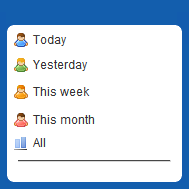THE ALGORITHM OF GIVING AUTOMATIC HARAKAT ON ARABIC SCRIPT
DOI:
https://doi.org/10.28961/kursor.v9i2.145Keywords:
Arabic, Harakat, Nahwu-Sharf, Algorithm, Cyclomatic Complexity TestingAbstract
The majority of Arabic reference books in Arabic writing without a vowel/harakat cause
students to have difficulty in learning Arabic. Reading Arabic Script without harakat
requires an understanding of the science of Nahwu-Sharf (Arabic Grammar) to be able to
understand its contents. Therefore, in this study the basic rules of Nahwu-Sharf Science
have been translated into an algorithm that can be used to provide an automatic harakat
on Arabic script (without harakat). Based on the interview results with the expert, six
examples of sentences that represented the types(conditions) of basic sentences in the
Arabic language have been used as scenarios to examine the generated algorithm. The
allowed sentence is limited to one sentence only and cannot be in the form of poetry or
satire. Additionally, Cyclomatic Complexity Testing is used to examine scenarios in a test
case. All the steps of the Cyclomatic Complexity have been performed, which are creating
the flowgraph, calculating the independent path, and testing scenario. The scenarios were
examined in a test case through 13-path test case examination and result match with
expected output. In addition, 24 examples which represented the six conditions have been
utilized to examine for more detailed analysis and also results accuracy 100% in
accordance with the basic rules of Nahwu-Sharf science.
Downloads
References
[2] Basic Arabic Grammar (Nahu). (2017). Ummah.com. Retrieved 10 October 2017, from http://www.ummah.com/forum/showthread.php?213237-Basic-Arabic-Grammar-(Nahu)
[3] Chik, A. R. (2011). Al-Alfaz al-arabiyyah al-muqtaradhah fi al-lughah al-malayuwiyyah: ‘ardhunwatahlil. Retrieved from http://portal.arabtime.com/article_preview.cfm?Action=Article&Preview=ViewOnly&ArticleID=21827
[4] Cyclomatic Complexity. (2017). Math.unipd.it. Retrieved 10 October 2017, from http://www.math.unipd.it/~tullio/IS-1/2004/Approfondimenti/cyclomatic.htm
[5] Ergul, O. (2015). Guide to Programming and Algorithms Using R (p. 1). [Place of publication not identified]: Springer.
[6] Greene, R. (2017). Why learning Arabic is so hard.. Slate Magazine. Retrieved 10 October 2017, from http://www.slate.com/articles/arts/culturebox/2005/06/im_trying_to_learn_arabic.html
[7] Hadni, M., Ouatik, S., &Lachkar, A. (2013). Effective Arabic Stemmer Based Hybrid Approach for Arabic Text Categorization. IJDKP, 3(4), 1-14. http://dx.doi.org/10.5121/ijdkp.2013.3401
[8] Kanjilal, J. (2017). How to analyze the Cyclomatic Complexity in your code. InfoWorld. Retrieved 10 October 2017, from https://www.infoworld.com/article/3097404/application-development/how-to-analyze-the-cyclomatic-
[9] Madinah Arabic Learn Arabic For Free. (2017). Madinaharabic.com. Retrieved 11 October 2017, from https://www.madinaharabic.com/articles/the-story-of-irab.html
[10] Pressman, R. (2001). Software Engineering (pp. 481-484). Boston: McGraw Hill.
[11] Puntambekar, A. (2009). Analysis of Algorithm and Design (1st ed., pp. 11-12). Pune, India: Technical Publications Pune
[12] Sembok, T., & Ata, B. (2013). Arabic Word Stemming Algorithms and Retrieval Effectiveness. Proceedings Of The World Congress On Engineering 2013, III.
[13] Shanhaji, A. (2000). Al Imam Matn al jurmiyah. Jakarta: Al Idrus
[14] Sirajudeen, A., &Adebisi, A. (2012). Teaching Arabic as a Second Language in Nigeria. Procedia - Social and Behavioral Sciences, 66, 126–135. doi:http://dx.doi.org/10.1016/j.sbspro.2012.11.254
[15] Oxford, R. L. (2003). Language Learning Styles and Strategies : an Overview. Learning, 1–25.









